Free resource to celebrate Gypsy, Roma and Traveller history month
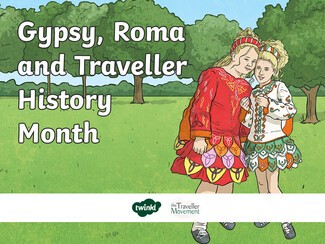
Check out this brilliant free downloadable resource to support a school assembly on the topic of Gypsy, Roma and Traveller history month.
There are also activity sheets with facts about Gypsy Roma and Travellers and their history to help bring Gypsy, Roma Traveller history month into the classroom for all to enjoy.
The teaching tool was made in partnership with The Traveller Movement and Twinkl an online publishing house which creates digital teaching materials for educators and parents in countries across the world.
The aim of the resources are to help people begin to understand the way of life of Gypsy, Roma and Travellers and the purpose of Gypsy, Roma and Traveller history month. You can download your free copy here.
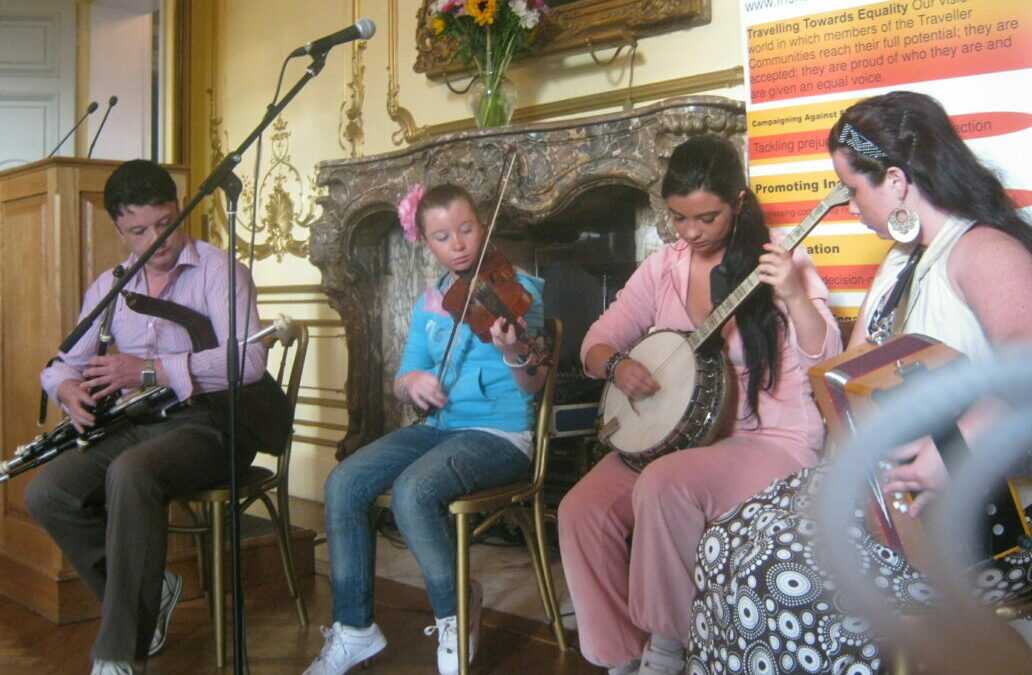

Gypsy Roma and Traveller History and Culture
Gypsy Roma and Traveller people belong to minority ethnic groups that have contributed to British society for centuries. Their distinctive way of life and traditions manifest themselves in nomadism, the centrality of their extended family, unique languages and entrepreneurial economy. It is reported that there are around 300,000 Travellers in the UK and they are one of the most disadvantaged groups. The real population may be different as some members of these communities do not participate in the census .
The Traveller Movement works predominantly with ethnic Gypsy, Roma, and Irish Traveller Communities.
Irish Travellers and Romany Gypsies
Irish Travellers
Traditionally, Irish Travellers are a nomadic group of people from Ireland but have a separate identity, heritage and culture to the community in general. An Irish Traveller presence can be traced back to 12th century Ireland, with migrations to Great Britain in the early 19th century. The Irish Traveller community is categorised as an ethnic minority group under the Race Relations Act, 1976 (amended 2000); the Human Rights Act 1998; and the Equality Act 2010. Some Travellers of Irish heritage identify as Pavee or Minceir, which are words from the Irish Traveller language, Shelta.
Romany Gypsies
Romany Gypsies have been in Britain since at least 1515 after migrating from continental Europe during the Roma migration from India. The term Gypsy comes from “Egyptian” which is what the settled population perceived them to be because of their dark complexion. In reality, linguistic analysis of the Romani language proves that Romany Gypsies, like the European Roma, originally came from Northern India, probably around the 12th century. French Manush Gypsies have a similar origin and culture to Romany Gypsies.
There are other groups of Travellers who may travel through Britain, such as Scottish Travellers, Welsh Travellers and English Travellers, many of whom can trace a nomadic heritage back for many generations and who may have married into or outside of more traditional Irish Traveller and Romany Gypsy families. There were already indigenous nomadic people in Britain when the Romany Gypsies first arrived hundreds of years ago and the different cultures/ethnicities have to some extent merged.
Number of Gypsies and Travellers in Britain
This year, the 2021 Census included a “Roma” category for the first time, following in the footsteps of the 2011 Census which included a “Gypsy and Irish Traveller” category. The 2021 Census statistics have not yet been released but the 2011 Census put the combined Gypsy and Irish Traveller population in England and Wales as 57,680. This was recognised by many as an underestimate for various reasons. For instance, it varies greatly with data collected locally such as from the Gypsy Traveller Accommodation Needs Assessments, which total the Traveller population at just over 120,000, according to our research.
Other academic estimates of the combined Gypsy, Irish Traveller and other Traveller population range from 120,000 to 300,000. Ethnic monitoring data of the Gypsy Traveller population is rarely collected by key service providers in health, employment, planning and criminal justice.
Where Gypsies and Travellers Live
Although most Gypsies and Travellers see travelling as part of their identity, they can choose to live in different ways including:
- moving regularly around the country from site to site and being ‘on the road’
- living permanently in caravans or mobile homes, on sites provided by the council, or on private sites
- living in settled accommodation during winter or school term-time, travelling during the summer months
- living in ‘bricks and mortar’ housing, settled together, but still retaining a strong commitment to Gypsy/Traveller culture and traditions
Currently, their nomadic life is being threatened by the Police, Crime, Sentencing and Courts Bill, that is currently being deliberated in Parliament, To find out more or get involved with opposing this bill, please visit here
Although Travellers speak English in most situations, they often speak to each other in their own language; for Irish Travellers this is called Cant or Gammon* and Gypsies speak Romani, which is the only indigenous language in the UK with Indic roots.
*Sometimes referred to as “Shelta” by linguists and academics
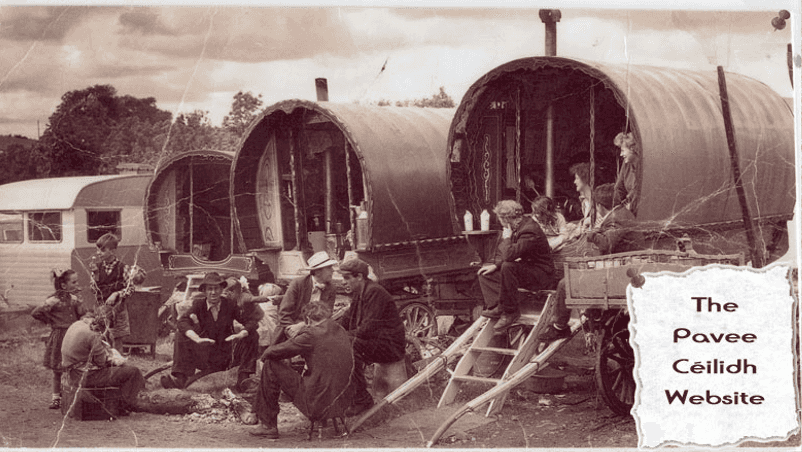
New Travellers and Show People
There are also Traveller groups which are known as ‘cultural’ rather than ‘ethnic’ Travellers. These include ‘new’ Travellers and Showmen. Most of the information on this page relates to ethnic Travellers but ‘Showmen’ do share many cultural traits with ethnic Travellers.
Show People are a cultural minority that have owned and operated funfairs and circuses for many generations and their identity is connected to their family businesses. They operate rides and attractions that can be seen throughout the summer months at funfairs. They generally have winter quarters where the family settles to repair the machinery that they operate and prepare for the next travelling season. Most Show People belong to the Showmen’s Guild which is an organisation that provides economic and social regulation and advocacy for Show People. The Showman’s Guild works with both central and local governments to protect the economic interests of its members.
The term New Travellers refers to people sometimes referred to as “New Age Travellers”. They are generally people who have taken to life ‘on the road’ in their own lifetime, though some New Traveller families claim to have been on the road for three consecutive generations. The New Traveller culture grew out of the hippie and free-festival movements of the 1960s and 1970s.
Barge Travellers are similar to New Travellers but live on the UK’s 2,200 miles of canals. They form a distinct group in the canal network and many are former ‘new’ Travellers who moved onto the canals after changes to the law made the free festival circuit and a life on the road almost untenable. Many New Travellers have also settled into private sites or rural communes although a few groups are still travelling.
If you are a new age Traveller and require support please contact Friends, Families, and Travellers (FFT) .
Differences and Values
Differences Between Gypsies, Travellers, and Roma
Gypsies, Roma and Travellers are often categorised together under the “Roma” definition in Europe and under the acronym “GRT” in Britain. These communities and other nomadic groups, such as Scottish and English Travellers, Show People and New Travellers, share a number of characteristics in common: the importance of family and/or community networks; the nomadic way of life, a tendency toward self-employment, experience of disadvantage and having the poorest health outcomes in the United Kingdom.
The Roma communities also originated from India from around the 10th/ 12th centuries and have historically faced persecution, including slavery and genocide. They are still marginalised and ghettoised in many Eastern European countries (Greece, Bulgaria, Romania etc) where they are often the largest and most visible ethnic minority group, sometimes making up 10% of the total population. However, ‘Roma’ is a political term and a self-identification of many Roma activists. In reality, European Roma populations are made up of various subgroups, some with their own form of Romani, who often identify as that group rather than by the all-encompassing Roma identity.
Travellers and Roma each have very different customs, religion, language and heritage. For instance, Gypsies are said to have originated in India and the Romani language (also spoken by Roma) is considered to consist of at least seven varieties, each a language in their own right.
Values and Culture of GRT Communities
Family, extended family bonds and networks are very important to the Gypsy and Traveller way of life, as is a distinct identity from the settled ‘Gorja’ or ‘country’ population. Family anniversaries, births, weddings and funerals are usually marked by extended family or community gatherings with strong religious ceremonial content. Gypsies and Travellers generally marry young and respect their older generation. Contrary to frequent media depiction, Traveller communities value cleanliness and tidiness.
Many Irish Travellers are practising Catholics, while some Gypsies and Travellers are part of a growing Christian Evangelical movement.
Gypsy and Traveller culture has always adapted to survive and continues to do so today. Rapid economic change, recession and the gradual dismantling of the ‘grey’ economy have driven many Gypsy and Traveller families into hard times. The criminalisation of ‘travelling’ and the dire shortage of authorised private or council sites have added to this. Some Travellers describe the effect that this is having as “a crisis in the community” . A study in Ireland put the suicide rate of Irish Traveller men as 3-5 times higher than the wider population. Anecdotal evidence suggests that the same phenomenon is happening amongst Traveller communities in the UK.
Gypsies and Travellers are also adapting to new ways, as they have always done. Most of the younger generation and some of the older generation use social network platforms to stay in touch and there is a growing recognition that reading and writing are useful tools to have. Many Gypsies and Travellers utilise their often remarkable array of skills and trades as part of the formal economy. Some Gypsies and Travellers, many supported by their families, are entering further and higher education and becoming solicitors, teachers, accountants, journalists and other professionals.
There have always been successful Gypsy and Traveller businesses, some of which are household names within their sectors, although the ethnicity of the owners is often concealed. Gypsies and Travellers have always been represented in the fields of sport and entertainment.

How Gypsies and Travellers Are Disadvantaged
The Traveller, Gypsy, and Roma communities are widely considered to be among the most socially excluded communities in the UK. They have a much lower life expectancy than the general population, with Traveller men and women living 10-12 years less than the wider population.
Travellers have higher rates of infant mortality, maternal death and stillbirths than the general population. They experience racist sentiment in the media and elsewhere, which would be socially unacceptable if directed at any other minority community. Ofsted consider young Travellers to be one of the groups most at risk of low attainment in education.
Government services rarely include Traveller views in the planning and delivery of services.
In recent years, there has been increased political networking between the Gypsy, Roma and Traveller activists and campaign organisations.
Watch this video by Travellers Times made for Gypsy Roma Traveller History Month 2021:

Information and Support
We have a variety of helpful guides to provide you with the support you need
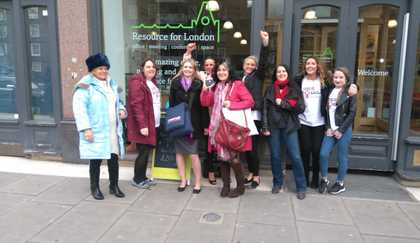
Community Corner
Read all about our news, events, and the upcoming music and artists in your area
The UK National Charity for History
Password Sign In
Become a Member | Register for free
Gypsy, Roma and Traveller History Month
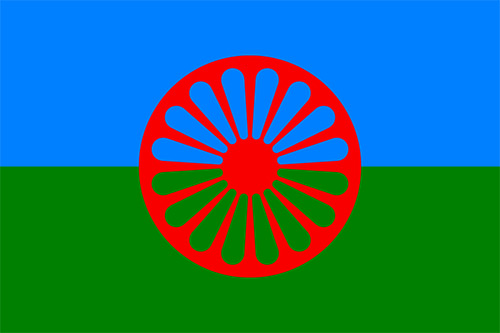
- Add to My HA
Gypsy, Roma and Traveller month
In 1993 the writer, former dissident and first President of the Czech Republic Vaclav Havel described the situation of the Roma ‘as a litmus test for Europe’s civil society’. Nearly 30 years later the social questions of how the prejudice against the Gypsy, Roma and Traveller communities across Europe is to be understood and challenged remains.
Gypsy, Roma and Traveller communities are diverse with distinct characteristics and traditions. Nation States group them all together as nomadic peoples whose lack of permanent status is often all that provides their real commonality. These different groups can trace their presence in Europe for over 1000 years and yet they continue to be labelled as outsiders and are frequently treated by the authorities and general public with hostility. Despite being a part of European societies for centuries their lifestyle, customs and languages are frequently the subject of disdain and dismissal. The historic treatment of these communities in many countries is little more than barbaric, reaching the level of genocide by the Nazis during the Holocaust.
However, following the Second World War the Gypsy, Roma and Traveller communities continued to be the subject of persecution by governments and officials of all political shades. Cultural erosion was one of the ways that countries sought to ‘solve the Gypsy issue’. In parts of Eastern Europe it is still customary for media channels to show an image of a Roma village whenever they want to raise a general story about criminality, such is the entrenched prejudice in many places.
Havel in his ‘Litmus test’ statement was addressing his own country’s long history of prejudice as well as highlighting that these attitudes were widespread amongst the European family. He was keen to raise the idea that if civil society was to be a success in post-Communist Europe all communities must be treated equally and that included the traditional outsider communities such as the Gypsy, Roma and Travellers communities.
In Britain the exclusion and denigration of Gypsy, Roma and Traveller communities also has a strong history – and many would argue present. That is why June was adopted as Gypsy, Roma and Traveller month in an attempt to explain the heritage of these groups as well as their long presence within the UK. The majority of people still know very little about these communities beyond myth and emotive headlines – none of which helps the development of civil society very much. So in case you missed the chance to find out some of the real history of these communities last month we are bringing you another chance with some newly released podcasts.
Take some time to understand why this history is important, interesting and relevant to any country that believes in a civil society that values democracy and inclusion.
- Podcast: British-Irish Gypsy Traveller History (Part 1)
- Podcast: British-Irish Gypsy Traveller History (Part 2)
- Teaching Gypsy, Roma and Traveller history

IMAGES
COMMENTS
Many Gypsy, Roma and Traveller young people feel that their culture and way of life is not recognised or affirmed within the education system. We have created this page to support teachers and other staff in educational settings bring Gypsy, Roma and Traveller histories and cultures into the classroom. Below, you can find a range of resources ...
KS2 Gypsy, Roma and Traveller History Month Resource Pack. KS2 Mapping Gypsy, Roma and Traveller Journeys Worksheet. Gypsy, Roma and Traveller Display Banner. KS2 Gypsy, Roma and Traveller History Month Differentiated Fact File. A brilliant resource to support an assembly on the topic of Gypsy, Roma and Traveller History Month.
A brilliant resource to support an assembly on the topic of Gypsy, Roma and Traveler History Month. The above video is from a third-party source. We accept no responsibility for any videos from third-party sources. Please let us know if the video is no longer working. Twinkl Key Stage 1 - Year 1, Year 2 Whole School Assemblies.
Check out this brilliant free downloadable resource to support a school assembly on the topic of Gypsy, Roma and Traveller history month. There are also activity sheets with facts about Gypsy Roma and Travellers and their history to help bring Gypsy, Roma Traveller history month into the classroom for all to enjoy. The teaching tool was made in partnership with The Traveller Movement and ...
A brilliant resource to support an assembly on the topic of Gypsy, Roma and Traveller History Month and to teach about Romani history. The above video is from a third-party source. We accept no responsibility for any videos from third-party sources.
Gypsy, Roma and Traveller People. Gypsies originally came from the India. They travelled across Asia and Europe and eventually arrived in Britain in 1514 (the time of Henry VIII). When they arrived in Europe people thought they were from Egypt and called them 'The Travelling Egyptians'. Roma also came from India originally like Gypsies, but ...
A brilliant resource to support an assembly on the topic of Gypsy, Roma and Traveller History Month. A brilliant resource to support an assembly on the topic of Gypsy, Roma and Traveller History Month and to teach about Romani history.
by Open Society Foundations. published on 30 March 2023. Europe is home to 10-12 million Roma, yet many Europeans are unable to answer the basic question, "Who are the Roma?". The remarkable history of Gypsies, Roma, and Travellers in Europe, beginning over 1,000 years ago, tells a story of diversity, creativity, and survival. Remove Ads.
A Short Animated History of Britain's Gypsies, Roma and Travellers called Roads from the Past from Travellers' Times. It gives a short overview and is useful for teachers and pupils. Ensuring Gypsy, Roma and Traveller children do not feel unseen in the history classroom - Teaching History article by Richard Kerridge and Helen Snelson.
Roma artisans have also made livings from repairing items deemed "uneconomic" to mend, such as pocket watches, tea-pots, and porcelain dishes—the originators of what is now described as the circular economy. Many Roma, Gypsies, and Travellers are engaged in recycling and have been for centuries, long before major environmental concerns.
A variety of resources, including an assembly powerpoint, craft ideas and worksheets to learn about Gypsy, Roma and Traveller History month. Out of Site - Show Racism the Red Card (KS2+) An education pack including a variety of activities that can be tailored to the age and abilities of your students with additional extension activity ideas ...
Gypsy, Roma and Traveller (abbreviated to GRT) is an umbrella term used in the United Kingdom to represent several diverse ethnic groups which have a shared history of nomadism.The groups include Gypsies, defined as communities of travelling people who share a Romani heritage, resident in Britain since the 16th century; Ethnic Travellers, the traditional travelling people of Ireland and ...
Gypsy Roma and Traveller History Month (GRTHM) was established in Britain in 2008 as a way of raising awareness of these communities and their contributions to society, and to offset negative stereotyping and prejudices. The aims of the GRTHM are to: Promote knowledge of the Gypsy, Roma and Traveller History, Cultural and Heritage.
Gypsies, Roma and Travellers have a rich and diverse culture. Gypsy Roma and Traveller people belong to minority ethnic groups that have contributed to British society for centuries. Their distinctive way of life and traditions manifest themselves in nomadism, the centrality of their extended family, unique languages and entrepreneurial economy.
Gypsy, Roma and Traveller month. In 1993 the writer, former dissident and first President of the Czech Republic Vaclav Havel described the situation of the Roma 'as a litmus test for Europe's civil society'. Nearly 30 years later the social questions of how the prejudice against the Gypsy, Roma and Traveller communities across Europe is ...
We work to end racism and discrimination against Gypsy, Roma and Traveller people and to protect the right to pursue a nomadic way of life. We support individuals and families with the issues that matter most to them, at the same time as working to transform systems and institutions to address the root causes of inequalities faced by Gypsy, Roma and Traveller people.
Texts adopted by the Parliamentary Assembly of the Council of Europe. Resolution 2153 (2017) Promoting the inclusion of Roma and Travellers. Resolution 1927 (2013) Ending discrimination against Roma children. Recommendation 2003 (2012) of the Parliamentary Assembly on Roma migrants in Europe. Recommendation 1941 (2010) of the Parliamentary ...
What is Gypsy, Roma and Traveller History Month? Every year, during the month of June, people are encouraged to join together and celebrate the diversity and richness that Gypsy, Roma and Traveller communities bring to the UK, as well as learn about Romani history.. Gypsies, Roma and Travellers are the largest ethnic minority community existing within the European Union with over 12 million ...
The Roma Rough Sleeping Team supports people from Roma communities sleeping rough to understand and access their entitlements and find a route off the street. It includes immigration advice, employment support and Roma mediators with a strong understanding of Roma culture and language skills. It supports local authorities and services to better ...